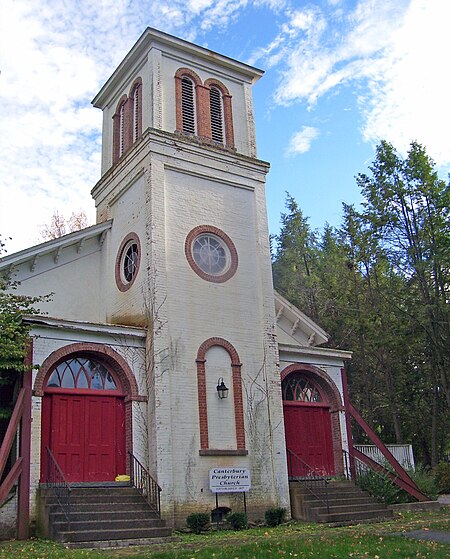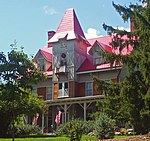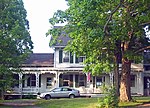Canterbury Presbyterian Church
1826 establishments in New York (state)19th-century Presbyterian church buildings in the United StatesChurches completed in 1826Churches on the National Register of Historic Places in New York (state)Closed churches in New York (state) ... and 5 more
Cornwall, New YorkFederal architecture in New York (state)Former Presbyterian churches in New York (state)National Register of Historic Places in Orange County, New YorkPresbyterian churches in New York (state)

Canterbury Presbyterian Church is located along Clinton Street in downtown Cornwall, New York, United States. It is a white stone and brick building in the Federal style, with later additions in a Colonial Revival style consistent with the earlier structure. Since 1996 it has been listed on the National Register of Historic Places. Services were last held in 2004 as the church merged into Cornwall Presbyterian Church, which had been founded by dissident members of Canterbury. The building has been used by several local nonprofit groups. In 2018 the Church which had been in need of structural repairs was acquired and converted in to a Dance Studio.
Excerpt from the Wikipedia article Canterbury Presbyterian Church (License: CC BY-SA 3.0, Authors, Images).Canterbury Presbyterian Church
Clinton Street, Town of Cornwall
Geographical coordinates (GPS) Address External links Nearby Places Show on map
Geographical coordinates (GPS)
| Latitude | Longitude |
|---|---|
| N 41.435277777778 ° | E -74.031388888889 ° |
Address
Canterbury Presbyterian Church
Clinton Street 44
12518 Town of Cornwall
New York, United States
Open on Google Maps










